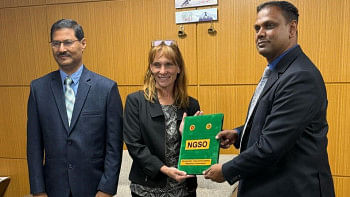Autism: Embracing knowledge and accepting the different
April is the World Autism Month. Autism, or more appropriately, Autism Spectrum Disorder (ASD) includes a group of developmental disorders. Because it is a broad range of disorders, the disability of each person with ASD can be mild, it can be severe, or it can fall somewhere along the spectrum.
ASD is a neurodevelopmental disorder that impairs a person's ability to communicate and interact with others. People with ASD often look no different from the rest of us. Some have unique cognitive abilities ranging from gifted to severely challenged.
Signs of autism
As a neurodevelopmental disability, it impairs a child's social communication and interaction skills. What we consider normal back-and-forth conversation and emotion in a typical social context is deficient in children with ASD. Eye contact, body language, gestures, facial expression and other non-verbal communication skills are markedly different in ASD. Behavioural adaptation to suit diverse social contexts and understanding relationships are also missing. Rigidity of routines and distress at minor changes, recurrent patterns of behaviour with repetitive motor movements and action, use of objects, or speech are also signs of ASD. Children with ASD often times show intense reactions to sounds, smells, tastes, textures, lights and colours.
The signs of autism may appear between 2 to 3 years of age although data suggest that most children are not diagnosed with ASD until after age 4 years.
Autism risk factors
There is no scientific evidence that indicates vaccines cause autism. We do not know yet what multiple factors specifically cause autism. However, we now know that there are genetic and environmental components that contribute to ASD.
1. Changes, or mutations, in certain genes increase the likelihood of a child developing autism. Researchers have so far identified approximately 107 such genes.
2. Autism seems to run in families. Children who have siblings with ASD are usually at a higher risk of also having ASD.
3. Parents who have children at an older age tend to have children with greater risk for ASD.
4. There is an increased risk of ASD in people with certain genetic or chromosomal conditions.
5. Certain medications are dangerous during pregnancy. Consumption of alcohol during pregnancy, maternal diabetes and obesity may also increase the risk factors for ASD.
6. Some medical conditions that often accompany autism include gastrointestinal disorder, attention deficit hyperactivity disorder (ADHD), severe anxiety and phobias.
Treatment
There is no medicine to treat ASD yet. As ASD is usually accompanied by other conditions such as ADHD, there are medications available that can alleviate such related symptoms.
Autistic children need speech language therapy to improve communication skills. To control emotion and repetitive behaviour, cognitive behavioural therapy is provided that can help with melt downs and emotional outbursts. Therapists also practice positive reinforcement techniques which promotes positive social interaction and communication. Parent education is important coping with the challenges of children with ASD.
Very recently researchers at Duke University in North Carolina used umbilical cord blood infusions (containing stem cells) in children with ASD and preliminary results show great promise.
ASD is not a developmental dead end for the child or the family. The citizens of an enlightened society must strive to understand and help every child with ASD reach his or her greatest potential.
Badrum Nawazish is the President of SIVUS Bangladesh and Muhammad Arif is the CEO of 4Sages, Inc. in Boston.
Email: [email protected]; [email protected]

 For all latest news, follow The Daily Star's Google News channel.
For all latest news, follow The Daily Star's Google News channel. 



Comments